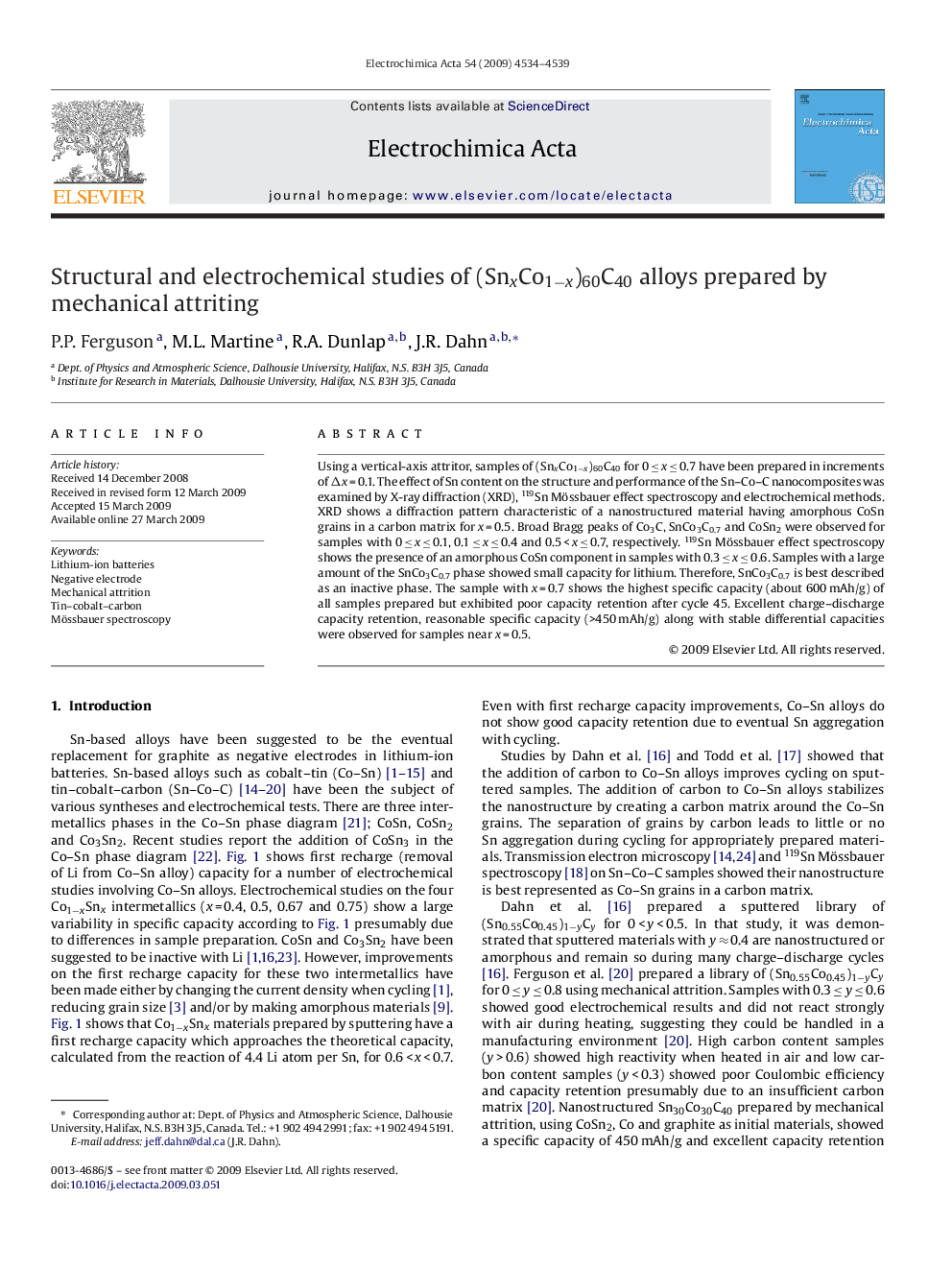| Article ID | Journal | Published Year | Pages | File Type |
|---|---|---|---|---|
| 191078 | Electrochimica Acta | 2009 | 6 Pages |
Using a vertical-axis attritor, samples of (SnxCo1−x)60C40 for 0 ≤ x ≤ 0.7 have been prepared in increments of Δx = 0.1. The effect of Sn content on the structure and performance of the Sn–Co–C nanocomposites was examined by X-ray diffraction (XRD), 119Sn Mössbauer effect spectroscopy and electrochemical methods. XRD shows a diffraction pattern characteristic of a nanostructured material having amorphous CoSn grains in a carbon matrix for x = 0.5. Broad Bragg peaks of Co3C, SnCo3C0.7 and CoSn2 were observed for samples with 0 ≤ x ≤ 0.1, 0.1 ≤ x ≤ 0.4 and 0.5 < x ≤ 0.7, respectively. 119Sn Mössbauer effect spectroscopy shows the presence of an amorphous CoSn component in samples with 0.3 ≤ x ≤ 0.6. Samples with a large amount of the SnCo3C0.7 phase showed small capacity for lithium. Therefore, SnCo3C0.7 is best described as an inactive phase. The sample with x = 0.7 shows the highest specific capacity (about 600 mAh/g) of all samples prepared but exhibited poor capacity retention after cycle 45. Excellent charge–discharge capacity retention, reasonable specific capacity (>450 mAh/g) along with stable differential capacities were observed for samples near x = 0.5.
